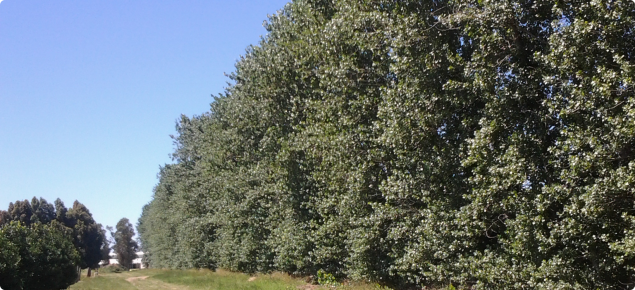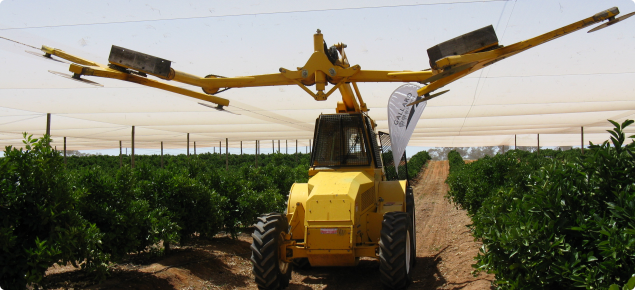Orchard establishment
Site choice
Where possible, good drainage, appropriate soil, water availability and likelihood of frost should be considered when choosing your orchard site. Depending on the varieties planted you may also require isolation from other citrus in order to get low-seeded fruit.
To prevent unnecessary traffic through your orchard and ready access to power, you should also locate your shed as near as possible to the road and the orchard beyond.
Windbreaks for citrus
Wind blemish has always been one of the biggest factors downgrading the quality of WA citrus fruits and the only way to minimise wind damage is with well managed windbreaks.
Many people have negative feelings towards windbreaks due to the competition and loss of production they cause in adjacent citrus plantings when not managed correctly.
If you take care of your windbreaks (water, fertilise and prune them) and install them correctly (spacing between trees and distance between rows) the benefits provided in lifting your grade 1 pack-out will far outweigh any ‘edge effects’ they may create in the orchard.
Clean nursery stock
Significant diseases and viruses can affect the yield of your crop as well as spread to other orchards without proper biosecurity practices in place. When purchasing new trees and budwood it is strongly recommended to use certified material such as from AUSCITRUS. These trees may cost more in the short term, however the potential losses and wasted resources such as water, energy and labour far outweigh the costs from loss of yield and potentially whole orchards.
Variety and rootstock selection
Selecting the right variety and rootstock is very important as it will ultimately impact on the profitability of your buisness.
Aim to select varieties desired by markets and consumers which are suited to your region and conditions. Ensure that the varieties you plant are able to meet the required maturity standards. Plant a mixture of varieties with different maturity times which will allow you to manage at peak times such as harvest. For mandarins, recent trends are towards growing varieties which are easy to peel and have no or few seeds. Variety information can be found on the following web pages:
Selecting the correct rootstock for your orchard is also essential as it is the rootstock which largely determines how well your trees will perform in your location. To find out more about citrus rootstocks see the Citrus rootstocks for Western Australia page.
Orchard monitoring
Establishing activities that collect information about your orchard can be critical for decision-making. Some paperwork is essential in order to do business, while other practices are not required but are helpful. Some examples of orchard monitoring are:
- pest, disease and disorders
- flowering and growth stages
- fruit size
- water use
- estimating crop load
- management practices
- actual yield and packout



